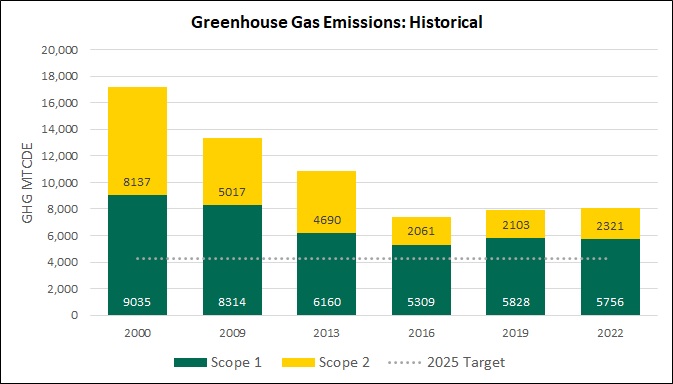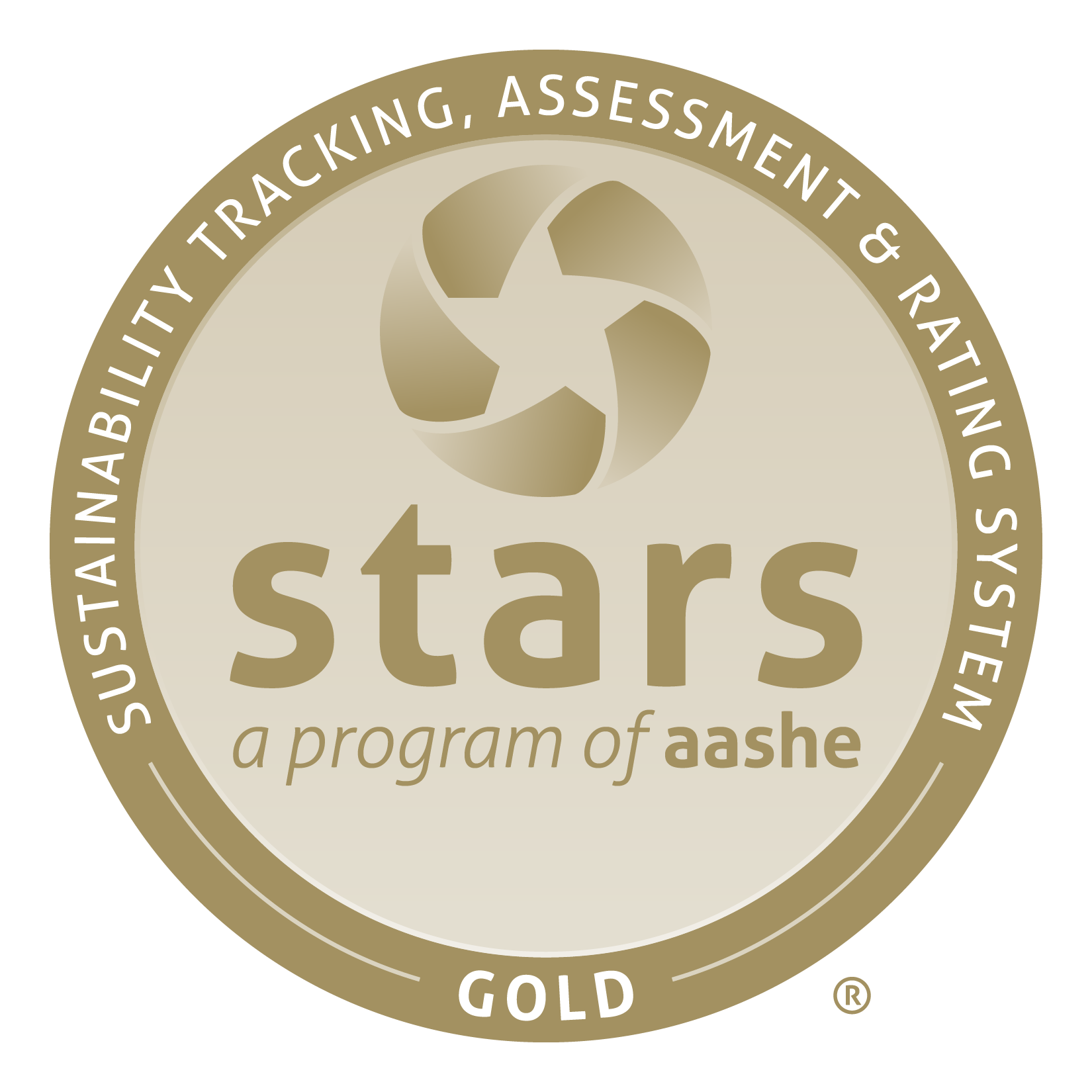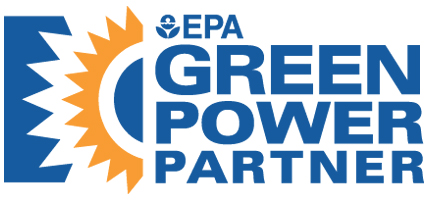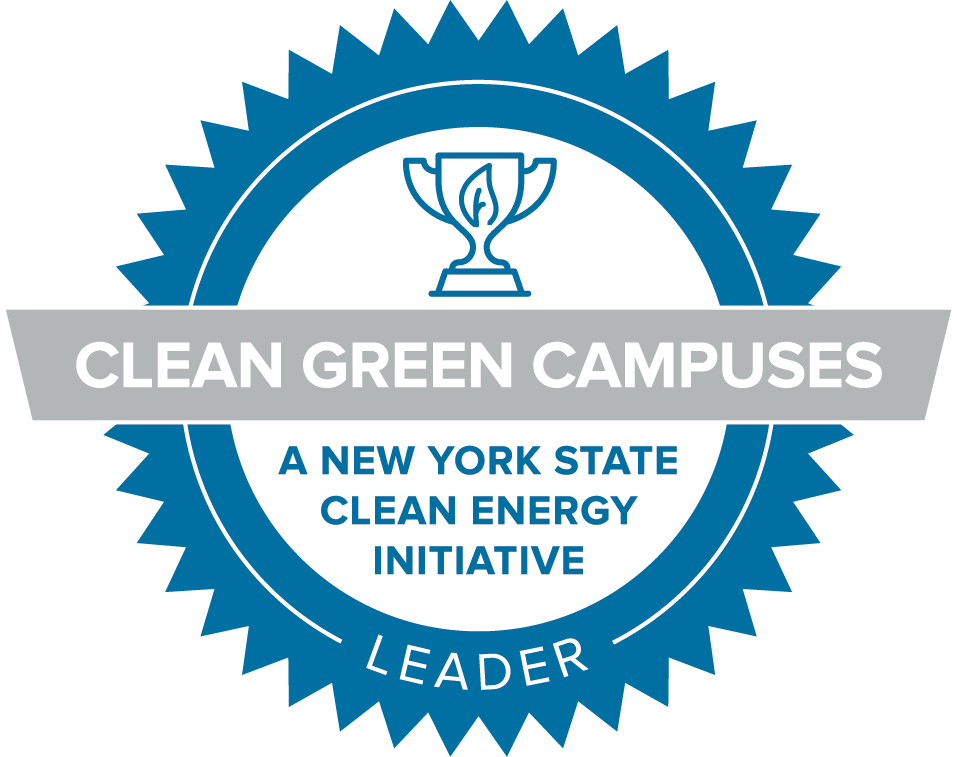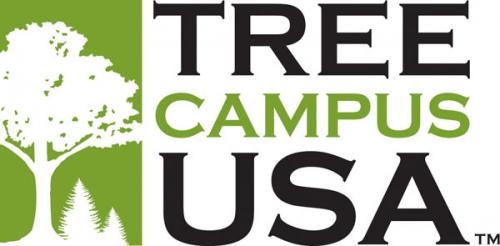Greenhouse gas inventories
Reporting greenhouse gas (GHG) emissions is an important part of Skidmore’s broader efforts to address climate change. Assessments like this allow Skidmore to determine the efficacy of ongoing mitigation strategies and inform future decisions to minimize emissions across operations and reduce our carbon footprint.
A GHG inventory documents the total GHG footprint, in metric tons of carbon dioxide equivalent (MTCDE), for which the College is either directly or indirectly responsible. Skidmore follows the internationally accepted Greenhouse Gas Protocol accounting and reporting standards using the University of New Hampshire's Sustainability Indicator Management and Analysis Platform (SIMAP).
Based on the Greenhouse Gas Protocol, emissions are separated into three categories or “scopes” defined by the College’s level of control of the emissions. Scope 1 includes direct emissions from sources that are owned and controlled by the College. Scope 2 includes indirect emissions resulting from the generation of purchased energy (for example, electricity), and Scope 3 includes indirect emissions that are a result of activities related to the College, but are not owned or controlled by the College (for example, employee commuting). A GHG inventory not only accounts for activities that generate GHG emissions, but it also gives credit to activities that reduce GHG emissions, such as carbon sinks (e.g., contractually preserved forests), renewable energy credits (RECs), composting, and other offsets. Skidmore tracks all Scope 1 and Scope 2 emission sources and many Scope 3 sources (e.g., commuting, business travel, study abroad air travel, student travel to/from home, wastewater, solid waste, paper purchasing). Scope 3 sources are more diffficult to measure and track are less accurate as compared to Scope 1 and 2 sources.
See past year inventories for a complete GHG inventory background and methodology.
2022 GHG Inventory
The 2022 GHG Inventory quantifies the amount of greenhouse gases released from college-related activities between June 1, 2021, and May 31, 2022 (Fiscal Year 2022). Skidmore's total emissions for all tracked sources in 2022 was 20,353 net MTCDE (this total includes 12,286 MTCDE Scope 3 emissions). However, for consistent comparisons and in alignment with national reporting programs (i.e, Second Nature's Climate Leadership Network), Skidmore presents and compares Scope 1, Scope 2, and select scope 3 emissions (commuting and directly-financed air travel only).
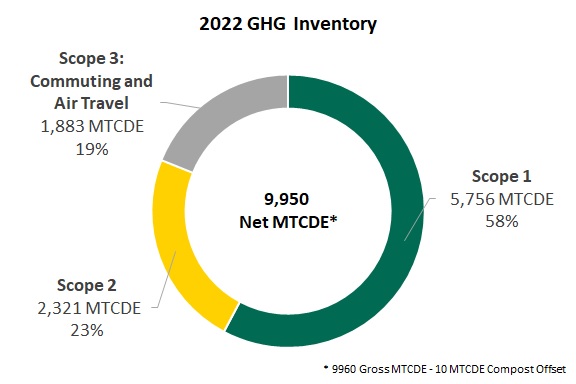
During Fiscal Year 2022, Skidmore College emitted approximately 9,950 gross MTCDE* (9,960 MTCDE - 10 MTCDE compost offset). Scope 1 sources contributed 5,756 MTCDE, Scope 2 contributed 2,321 MTCDE, and Scope 3 commuting and air travel contributed 1,883 MTCDE. Skidmore's largest sources of GHG emissions come from the combustion of natural gas for heating and cooling (93% of all Scope 1 emissions) and purchased electricity.
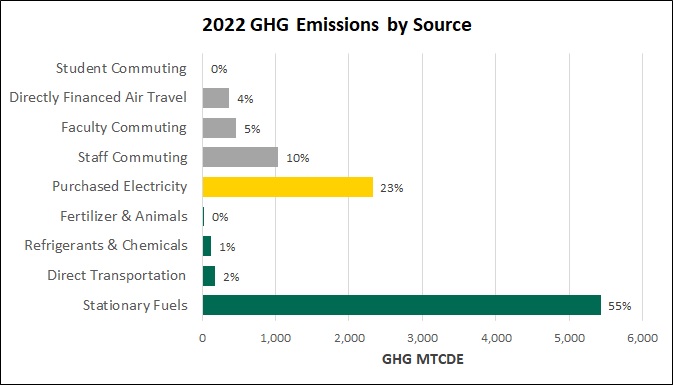
Tracking Progress toward Skidmore's 2025 75% GHG Reduction Goal
Skidmore has reduced Scope 1 and 2 GHG emissions by 53% from the 2000 baseline.
